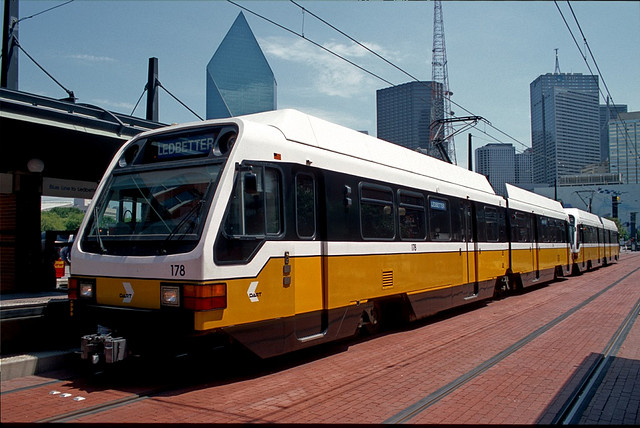
The first time I mentioned to a fellow intern that I take public transit from my home in North Richland Hills to downtown Dallas I swear they thought I had two heads. “What’s the TRE?” they asked. “Dallas has a train?” marveled another. “You mean, you have to walk 10 minutes from the DART station to the office?” someone wanted to know, horrified at the thought.
I was confused. Back home in Toronto, Canada, taking public transit was part of almost every commuter’s, well, commute. With the Toronto Transit Commission’s extensive subway line, army of buses, and fleet of diesel GO trains and coach busses, there’s nowhere in the city you can’t get to by public transit. Even Toronto’s old, but still capable streetcar line ushers almost 300,000 commuters to and from the downtown core each day.
What gives?
I get it. Dallas is a car city. The (fairly) wide lanes and next to no traffic (have you ever heard of Toronto’s Don Valley Parkway/Parking Lot?) make the decision of driving in to the city an easy one. And, okay, so DART isn’t the most time-efficient way of getting anywhere. And, sure, you almost always have to walk at least 10 minutes from one of the stations to get to where you need to go, but it is the largest light rail system in the U.S. That has to count for something, right?
Yesterday, the Dallas Morning News reported that DART is attempting to re-examine the way it brings non-member cities, like Arlington, into the DART network, which will hopefully continue to create a transit system that people actually want to use.
Since DART was created in 1983, the process of joining the system has been the same: citizens vote on the imposition of a 1 percent sales tax to fund public transit within the city. To date, 13 member-cities make up the transit system.
DART’s board has amended its policies in recent years to allow non-member cities to contract with the agency. Cities such as Mesquite have been given a three-year contract with DART in which the city itself covers the entire operating cost of the bus service.
Although these new provisions proved to be a positive advancement in DART’s attempt at bridging the public transportation gap in North Texas, questions regarding what will happen after the three-year contact ends are looming.
As DART, the Fort Worth Transportation Authority, and the city of Arlington begin negotiations to bring a commuter bus line to the city’s downtown core, DART board members are becoming increasingly apprehensive of the options given to non-member cities that wouldn’t have to pay the 1 percent sales tax and have no real commitment to the service.
As the board readies to vote today on a number of proposals that will limit the length of such contracts, as well as require that these cities pursue long-term service and financial plans, I hope, for the sake of us car-less folk, that these talks shine a spotlight on the need for better, more efficient transit in the DFW area.
Christina Colavecchia is a D Magazine intern.





